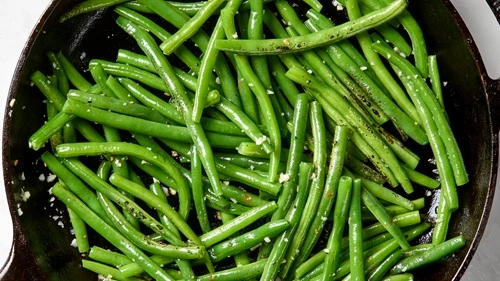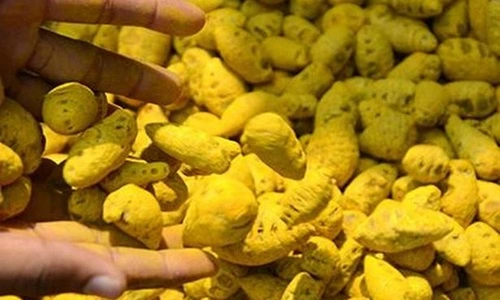Beans are among the most widely cultivated legumes in India, contributing significantly to nutritional security, dietary diversity, and sustainable farming practices. Known for their rich content of proteins, fiber, vitamins (A, C), minerals (iron, calcium), and antioxidants, beans are essential in Indian cuisine and food systems. They are cultivated across various regions of India due to their adaptability to diverse climates, making them a vital kharif and rabi crop.
India grows various types of beans, including French beans, kidney beans (Rajma), green beans, cluster beans (Guar), broad beans, cowpeas, and soybeans, with specific varieties developed for high yield, disease resistance, and regional suitability.
This article highlights more than 10 top bean varieties grown in India, their characteristics, cultivation regions, and uses.

1. Arka Komal (French Bean)
Arka Komal is one of the most popular French bean varieties known for its tender and stringless pods.
- Type: Bush bean
- Maturity: 45–50 days
- Regions: Karnataka, Tamil Nadu, Maharashtra, Himachal Pradesh
- Characteristics:
- High-yielding variety producing tender, bright green pods
- Resistant to rust and bacterial diseases
- Suitable for both fresh markets and processing
- Uses: Fresh consumption, salads, curries
2. Pusa Parvati (French Bean)
Pusa Parvati is a high-yielding dwarf French bean variety developed for early maturity and excellent pod quality.
- Type: Bush bean
- Maturity: 45–50 days
- Regions: North India, Maharashtra, Gujarat
- Characteristics:
- Uniform, green, stringless pods
- Tolerant to pests and diseases
- Uses: Fresh market, processing, and home gardens
3. Arka Anoop (Cluster Bean / Guar)
Arka Anoop is a high-yielding cluster bean variety, grown primarily for its industrial value and green pods.
- Type: Cluster bean
- Maturity: 80–90 days
- Regions: Rajasthan, Gujarat, Haryana
- Characteristics:
- High gum content, making it ideal for guar gum production
- Tolerant to drought and high temperatures
- Uses: Industrial gum extraction, green vegetable
4. Pusa Navbahar (Cowpea)
Pusa Navbahar is an improved cowpea variety developed for high yield and early maturity.
- Type: Cowpea (Lobia)
- Maturity: 60–70 days
- Regions: Maharashtra, Tamil Nadu, Rajasthan
- Characteristics:
- Produces long, slender green pods
- High tolerance to drought and diseases
- Uses: Fresh pods, dried seeds, fodder
5. Arka Jay (Dolichos Bean / Broad Bean)
Arka Jay is a robust variety of broad beans valued for its pod quality and high yield.
- Type: Broad bean
- Maturity: 80–90 days
- Regions: Karnataka, Tamil Nadu, Kerala
- Characteristics:
- Tender, flat pods with excellent cooking quality
- Tolerant to pests and powdery mildew
- Uses: Fresh vegetables, snacks, curries
6. VL Rajma 125 (Kidney Bean)
VL Rajma 125 is a popular kidney bean variety (Rajma) known for its high yield and grain quality.
- Type: Rajma (Kidney bean)
- Maturity: 110–120 days
- Regions: Himachal Pradesh, Uttarakhand, Jammu & Kashmir
- Characteristics:
- Uniform, bright red grains with excellent taste
- High resistance to rust and blight diseases
- Uses: Rajma dishes, dals, curries
7. HUR-15 (Black Gram / Urad Bean)
HUR-15 is a high-yielding variety of black gram, popularly grown in India for pulse production.
- Type: Black gram (Urad)
- Maturity: 75–85 days
- Regions: Uttar Pradesh, Madhya Pradesh, Bihar
- Characteristics:
- Uniform grains and resistance to yellow mosaic virus
- High yield potential in both irrigated and rainfed conditions
- Uses: Dals, snacks, idli/dosa batter
8. CO-2 (Green Gram / Moong Bean)
CO-2 is an improved variety of green gram, also known as Moong bean, widely cultivated in India.
- Type: Green gram
- Maturity: 65–70 days
- Regions: Tamil Nadu, Andhra Pradesh, Karnataka
- Characteristics:
- High resistance to powdery mildew and yellow mosaic virus
- Suitable for both Kharif and Rabi seasons
- Uses: Dals, sprouted moong, snacks
9. Pusa Early Prolific (Pole Bean)
Pusa Early Prolific is a climbing pole bean variety, known for its continuous pod production and yield.
- Type: Pole bean
- Maturity: 55–60 days
- Regions: North India, Tamil Nadu, Karnataka
- Characteristics:
- Long, slender green pods
- Suitable for trellis-based cultivation
- Uses: Fresh vegetables, salads, stews
10. Rajma Chitra (Kidney Bean)
Rajma Chitra is a premium variety of kidney beans grown for its attractive grain color and superior taste.
- Type: Rajma
- Maturity: 120–130 days
- Regions: Himachal Pradesh, Uttarakhand, Jammu & Kashmir
- Characteristics:
- Medium-sized grains with white and red patterns
- High protein content and excellent cooking quality
- Uses: Rajma dishes, dals, export markets
FAQs
Q1: Which bean variety is best for fresh vegetable production?
A: Arka Komal (French bean), Pusa Parvati, and Pusa Early Prolific (Pole bean) are excellent for fresh vegetable production.
Q2: Which bean variety is suitable for drought-prone regions?
A: Pusa Navbahar (Cowpea) and Arka Anoop (Cluster bean) are drought-tolerant varieties ideal for water-scarce regions.
Q3: What is the best variety for kidney beans (Rajma)?
A: VL Rajma 125 and Rajma Chitra are high-yielding and preferred for their grain quality and taste.
Q4: Which variety of beans is ideal for pulse production?
A: CO-2 (Green gram), HUR-15 (Black gram), and CO-4 (Soybean) are popular pulse varieties grown in India.
Q5: Which bean variety has industrial value?
A: Arka Anoop (Cluster bean) is grown for guar gum production, widely used in industries like pharmaceuticals and food processing.
Conclusion
Beans are a vital component of Indian agriculture, offering nutritional benefits, food security, and economic value to farmers. With a wide range of varieties like Arka Komal, Pusa Parvati, VL Rajma 125, and CO-2, Indian farmers can choose the right type of beans for fresh markets, pulse production, or industrial purposes. By adopting improved varieties and cultivation practices, farmers can enhance productivity, profitability, and sustainability.

